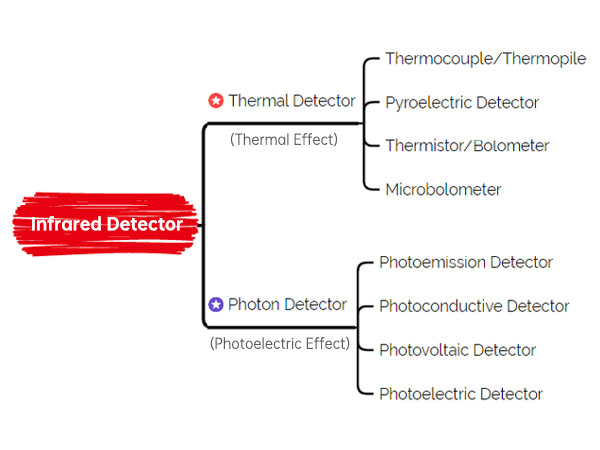Thermal Detector Vs. Photon Detector
Infrared detectors are photoelectric sensors that can respond to external infrared radiation, and are currently one of the focuses in the development of the sensor field.
According to working principle, infrared detector can be divided into thermal detector and photon detector.

1. Thermal Detector
The working principle of thermal detectors is to take advantages of the thermal effect to heat the detection element and cause heat transformation of some physical properties so that the IR radiation energy can be detected.
Thermal detector works at room temperature. During its operation, there are temperature changes, which may have slow response and a relatively low sensitivity compared with photon detectors.
There are mainly 4 types of the infrared thermal detector: Thermocouple/Thermopile, Pyroelectric Detector, Thermistor/Bolometer, Microbolometer
2. Photon Detector
The working principle of photon detector is to use the photon flow of incident radiation to interact with the electrons in the detector material, thereby changing the energy state of the electrons and causing various electrical phenomena, which are called photon effects.
Photon detector can be divided into Photoemission Detector, Photoconductive Detector, Photovoltaic Detector, Photoelectric Detector.
3. Comparison of Performance
|
Performance |
Thermal Detector |
Photon Detectors |
|
Sensitivity |
Low |
High |
|
Response Time |
Slow (Millisecond level) |
Fast (Micro-seconds Level) |
|
Working Temperature |
Room Temperature |
Cryogenic or Room Temperature |
|
Cost |
Low |
High |
